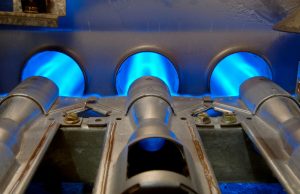 If your home is like the majority of homes in our area, it’s very likely that you use a natural gas furnace to keep it warm. This is, after all, the most common type of residential heating system in the country, particularly in locations like ours with very cold winters. They are not only able to produce a large amount of heat, but they do so at less of an expense than electric furnaces, since natural gas costs less than electricity per unit.
If your home is like the majority of homes in our area, it’s very likely that you use a natural gas furnace to keep it warm. This is, after all, the most common type of residential heating system in the country, particularly in locations like ours with very cold winters. They are not only able to produce a large amount of heat, but they do so at less of an expense than electric furnaces, since natural gas costs less than electricity per unit.
But it’s important to note that any natural gas appliance has the ability to develop safety issues. We don’t mean to alarm you, since a well-maintained heating system will very rarely encounter these dangers. Current furnace systems are built with your safety in mind, and have special features to disallow for the escape of dangerous carbon monoxide into your home. There is one need for heating repair in Glenview, IL that is especially important to tackle right away when it comes to carbon monoxide exposure, and that’s fixing a cracked heat exchanger.
What Is a Heat Exchanger?
This is the component that enables your furnace to actually heat up the air that travels through its ventilation system. When the burners of the furnace ignite, they generate hot combustion gas, which is collected inside the heat exchanger, which is a metal chamber—or series of chambers. They typically resemble something like a clam-shell.
The hot combustion gas within the heat exchanger heats up the metal walls, and the blower fan of the furnace comes on and sends air around the exchanger, where it picks up heat from the furnace wall, then continues into the ductwork. This process, ideally, uses combustion gas to heat the air without the gas ever coming into contact with that air.
Once the heating process is over, the combustion byproducts in the heat exchanger are vented out of the system through a flue, in order to release the gas harmlessly into the outdoor air.
What’s Up With a Cracked Heat Exchanger?
The metal of the heat exchanger expands and contracts as it heats and cools, and the stress of this will eventually cause a crack to form. Corrosion, due to the reaction between the combustion gas and metal (usually because of improper venting) can also weaken the metal to the point where cracks form.
The cracks are typically small—invisible to the untrained eye—however, as the exchangers expand with heat, they open up enough to allow some of the combustion gases to escape and enter the airflow. This means these harmful gasses will be sent through your home.
What to Watch For
How can you tell if your furnace is suffering from a cracked heat exchanger? One thing you should definitely watch out for—or rather, listen for—is a clicking sound coming from the furnace as soon as the blower shuts off. This should always be investigated by a pro.
If you notice corrosion anywhere on the furnace, this is also the sign of a problem (and honestly, this likely indicates it’s time to replace your heating system).


